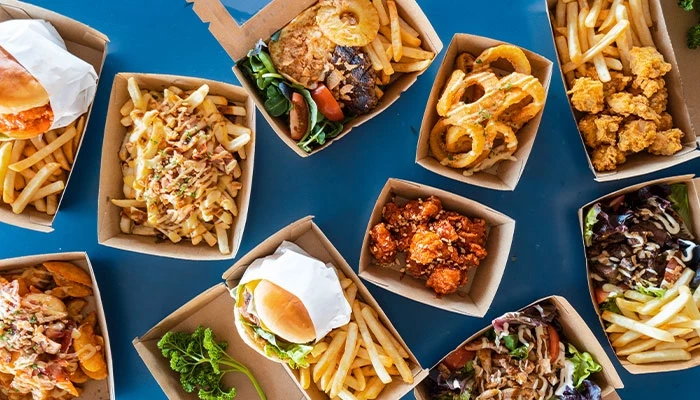In today\'s digital age, social media has become an indispensable tool for businesses, particularly in the takeaway industry. The right social media strategy can significantly boost a brand\'s visibility, engage customers, and drive sales. This article explores effective social media strategies for takeaway businesses, offering insights into how to optimize your online presence, engage with your audience, and ultimately, increase your revenue.
Understanding the Power of Social Media for Takeaway Businesses
Why Social Media Matters
Social media platforms are no longer just spaces for social interaction; they have transformed into powerful marketing tools. For takeaway businesses, platforms like Instagram, Facebook, Twitter, and TikTok offer a unique opportunity to connect with customers, showcase products, and build brand loyalty. With billions of active users, social media provides an expansive audience reach, making it essential for takeaway businesses to establish a robust online presence.
Choosing the Right Platforms
Not all social media platforms are created equal, and it\'s crucial for takeaway businesses to identify which platforms align best with their brand and target audience. For instance, Instagram and TikTok are ideal for visually-driven content, while Facebook and Twitter are excellent for customer interaction and updates. Choosing the right platforms involves understanding where your customers spend their time online and tailoring your content to each platform\'s strengths.
Crafting Compelling Content
Visual Storytelling on Instagram and TikTok
For takeaway businesses, visual appeal is key. Platforms like Instagram and TikTok thrive on high-quality images and engaging videos. Showcasing mouth-watering dishes, behind-the-scenes kitchen activities, and satisfied customer experiences can captivate your audience. Utilizing Instagram Stories, Reels, and TikTok trends can create a buzz around your brand, driving more traffic to your online ordering system.
Best Practices for Visual Content:
- High-Quality Images and Videos: Invest in good photography and videography to highlight the freshness and appeal of your dishes.
- Consistent Aesthetic: Maintain a cohesive brand aesthetic to build a recognizable brand identity.
- User-Generated Content: Encourage customers to share their experiences with your products and repost their content, fostering a sense of community.
Engaging Textual Content on Facebook and Twitter
While visual content is crucial, engaging textual content can also significantly impact your social media strategy. Facebook and Twitter are platforms where informative and interactive posts can thrive. Share updates about new menu items, promotions, and special events. Engage with your audience through polls, questions, and responding to comments and messages.
Effective Use of Textual Content:
- Interactive Posts: Use polls, quizzes, and questions to engage your audience and gather feedback.
- Timely Responses: Engage with comments and messages promptly to build a rapport with customers.
- Educational Content: Share behind-the-scenes stories, ingredient sourcing, and the benefits of your products.
Leveraging Influencer Partnerships
Finding the Right Influencers
Influencer marketing can be a powerful tool for takeaway businesses. Collaborating with influencers who align with your brand values and have a following that matches your target audience can amplify your reach. Micro-influencers, with their highly engaged followers, can be particularly effective for localized marketing efforts.
Tips for Successful Influencer Collaborations:
- Authenticity: Choose influencers who genuinely appreciate your brand and products.
- Clear Guidelines: Provide clear expectations and guidelines for content creation to ensure brand consistency.
- Engagement Metrics: Focus on engagement rates over follower counts to assess the potential impact of the partnership.
Implementing Social Media Advertising
Targeted Ads for Maximum Reach
Social media advertising allows takeaway businesses to target specific demographics, ensuring that your ads reach potential customers most likely to convert. Platforms like Facebook and Instagram offer sophisticated targeting options based on age, location, interests, and behaviors. By leveraging these tools, you can optimize your ad spend and achieve a higher return on investment.
Creating Effective Social Media Ads:
- Compelling Visuals and Copy: Craft eye-catching visuals and persuasive copy that highlight your unique selling points.
- Clear Call-to-Action: Include a strong call-to-action to guide potential customers to your website or ordering platform.
- A/B Testing: Continuously test different ad formats and content to find what resonates best with your audience.
Building a Community and Fostering Loyalty
Customer Engagement and Interaction
Social media is not just a platform for broadcasting messages; it\'s a space for dialogue and community building. Responding to customer inquiries, acknowledging feedback, and creating a conversational environment can enhance customer loyalty. Hosting giveaways, contests, and engaging challenges can also incentivize customer participation and foster a loyal community around your brand.
Strategies for Building Community:
- Personalized Responses: Address customers by name and personalize responses to build a connection.
- User-Generated Campaigns: Encourage customers to share their experiences with branded hashtags and feature their content on your page.
- Exclusive Offers: Reward your social media followers with exclusive discounts and promotions.
Analyzing and Optimizing Performance
Tracking Metrics and KPIs
To ensure the effectiveness of your social media strategies, it\'s essential to track relevant metrics and key performance indicators (KPIs). Metrics such as engagement rate, click-through rate, conversion rate, and follower growth can provide insights into what\'s working and what needs improvement. Regularly reviewing these metrics allows you to adjust your strategies and optimize your content for better results.
Tools for Monitoring Performance:
- Social Media Analytics Tools: Utilize tools like Facebook Insights, Instagram Analytics, and Twitter Analytics to track performance.
- Third-Party Analytics: Consider using third-party analytics tools for a more comprehensive view of your social media efforts.
- Regular Audits: Conduct regular audits of your social media accounts to identify areas for improvement and capitalize on successful strategies.
Conclusion
In conclusion, effective social media strategies are crucial for the success of takeaway businesses. By choosing the right platforms, crafting compelling content, leveraging influencer partnerships, and engaging with customers, takeaway businesses can significantly enhance their online presence and drive sales. Consistently analyzing and optimizing social media performance ensures that your strategies remain effective and aligned with your business goals. Embrace these strategies, and watch your takeaway business thrive in the competitive digital landscape.


